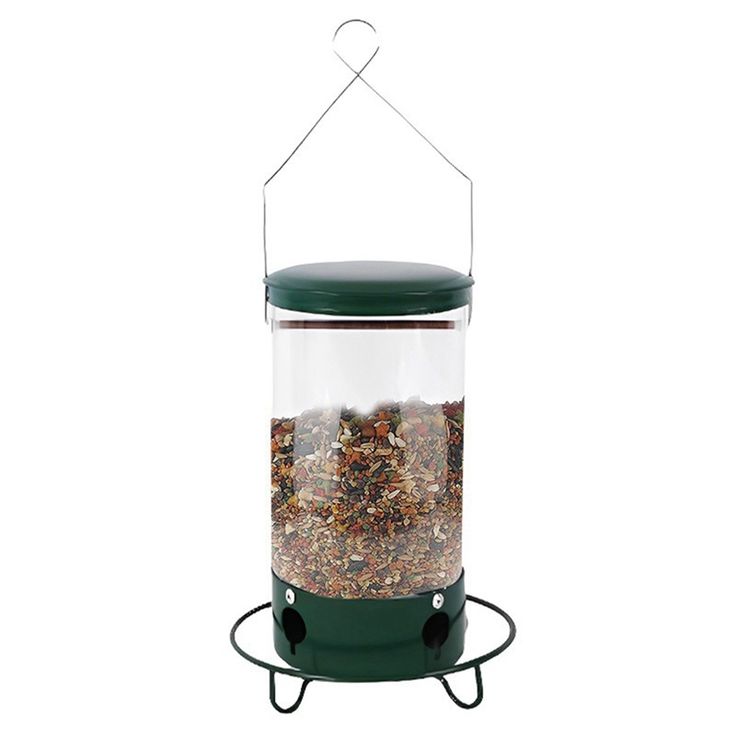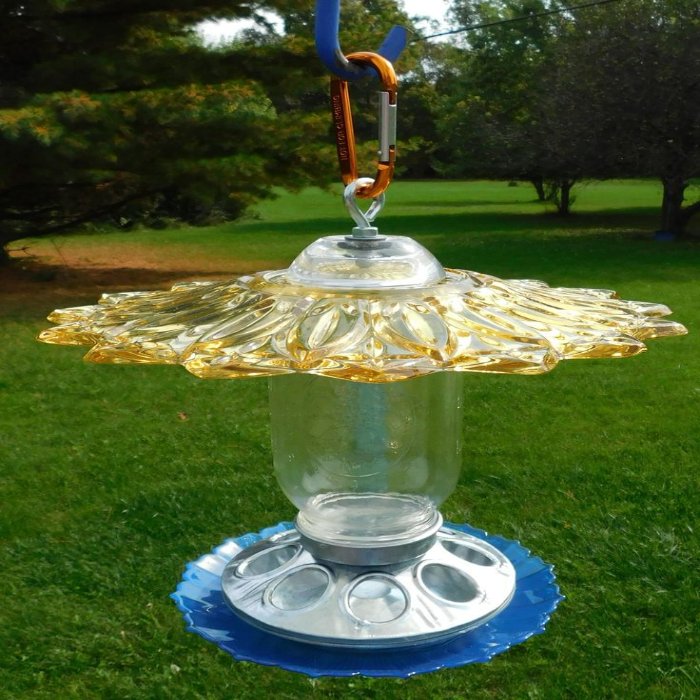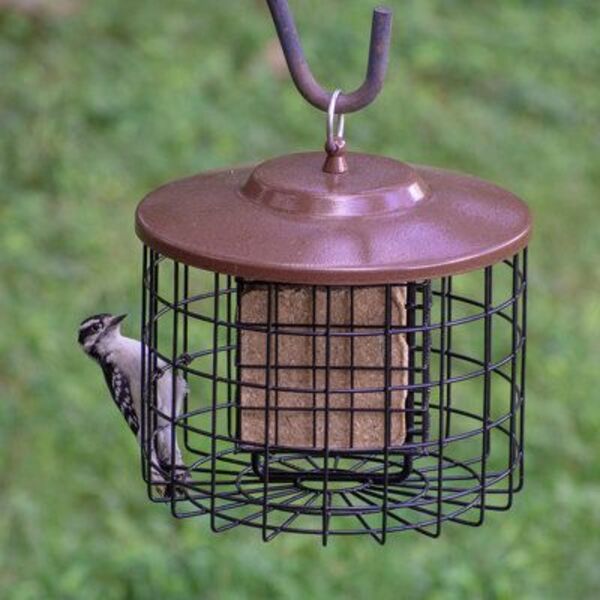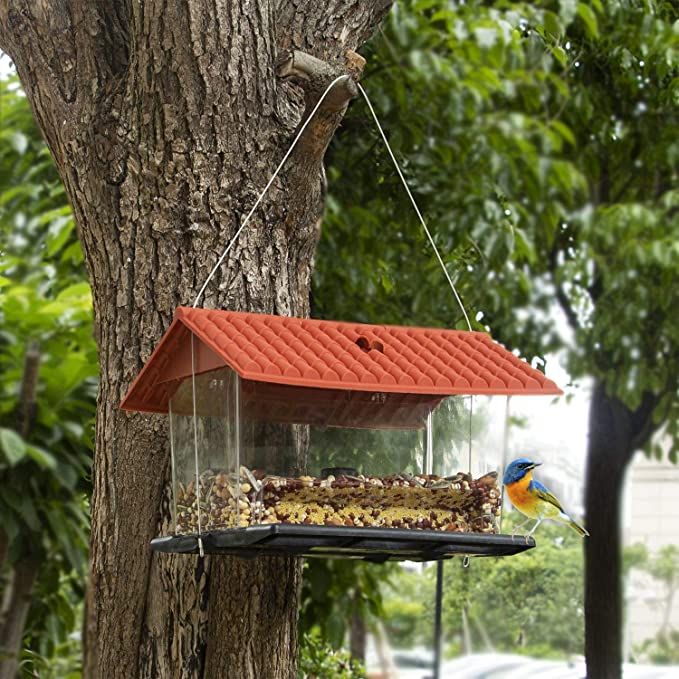Introduction to Anti-Squirrel Bird Feeders
For bird enthusiasts, the right bird feeder can turn a simple garden into a bustling bird sanctuary. However, squirrels often wreak havoc, hoarding seeds meant for feathered friends. Anti-squirrel bird feeders offer an effective solution.
Designed with ingenuity, these feeders use mechanisms to bar squirrels, ensuring that your birdseed investment is not in vain. With various deterrent techniques, from weight-sensitive perches to metal cages, these feeders focus on welcoming birds while keeping squirrels away.
Choosing an anti-squirrel bird feeder means selecting a product built to withstand squirrel antics. Look for sturdy materials, such as metal or UV-stabilized plastic, which resist gnawing and weathering. Capacities vary, so consider the bird population and seed consumption when picking a size.
Additionally, keep in mind the type of birds you wish to attract, as feeder design can impact which species visit. With the right anti-squirrel bird feeder, you can enjoy the sight of chirping birds without the frustration of persistent squirrels.

Top Squirrel-Proof Bird Feeder Picks
Finding the best anti squirrel bird feeder is key for bird lovers. The market offers a wide range, but not all are equal.
Criteria for Testing and Selecting Feeders
To test feeders, we consider several factors. These include ease of use, how well they deter squirrels, and durability. We also look at capacity and how attractive they are to birds.
Feeders must be hard for squirrels to chew or knock down. Our tests ensure that squirrels don’t get easy access to seeds.
Highlighting Top Performers
Among the tested feeders, some stood out. Brome’s SquirrelBuster Plus was a favorite. It has a tension system that shuts ports under a squirrel’s weight. It also keeps bird food dry with its ventilation.
The Brome SquirrelBuster Mini offers great value. It holds less seed but effectively blocks squirrels.
Large capacity options like Droll Yankees’ Yankee Flipper keep birds fed longer. It comes with a spinning mechanism that flips squirrels off.
We’ve seen various anti squirrel bird feeder designs excel. From chew-proof models to ones with suet capabilities, there’s a feeder for every need.
Features of an Effective Squirrel-Proof Bird Feeder
Choosing a bird feeder that stands up to squirrel antics is essential for bird lovers. The effectiveness of a squirrel-proof bird feeder depends on its deterrent mechanisms, material durability, and the seed capacity it offers. Understanding these features can ensure that birds have a peaceful dining experience free from squirrels.
Types of Deterrent Mechanisms
Squirrel-proof bird feeders utilize various mechanisms to keep squirrels away. Some options include:
- Weight-sensitive perches: These close off feeding ports when a squirrel’s weight is detected.
- Protective cages: These surround the feeding areas, allowing only birds to access the seeds.
- Spinning mechanisms: These dislodge squirrels attempting to latch on.
- Baffles: These shields prevent squirrels from reaching the seed from above or below.

Importance of Material Choice
Materials must withstand squirrel attacks and harsh weather. Look for:
- Metal: Tough and durable, offers long-term use.
- UV-stabilized plastic: Resists fading and cracking in sunlight.
- Resin: Prevents chewing damage by squirrels.
Considerations for Capacity and Seed Types
Capacity varies, affecting how often refills are needed. Also consider seed type:
- Large feeders: Good for busy bird areas; less frequent refills needed.
- Small feeders: Better for fewer birds; may deter squirrels by size.
- Seed type: Some feeders work best with specific seeds, attracting different birds.
Selecting the right squirrel-proof bird feeder involves careful consideration of these features. This ensures that birds can feed without interference from squirrels.
Installation and Placement Tips
Choosing the right spot to install your anti-squirrel bird feeder is crucial. It affects how bird-friendly and squirrel-resistant your feeder will be. Whether you decide to mount or hang your feeder, both options have their pros and cons.
Mounting Versus Hanging Feeders
Mounting feeders often requires a pole and provides stability. They are less swayed by wind and can include baffles for extra squirrel deterrence. Hanging feeders offer more flexibility in placement. You can hang them from trees, stands, or hooks. Ensure they are out of squirrels’ leaping range.
Location Strategies to Thwart Squirrels
When choosing a location, think open spaces. Squirrels are less likely to invade feeders if they can’t jump onto them from nearby trees or structures. Keep feeders about 10 feet from squirrel launch points. Consider higher locations; squirrels are less able to climb to great heights without jumping from another surface.

Maintenance and Usability
Effortless upkeep is key for any anti squirrel bird feeder. Proper maintenance and user-friendly features make life easier for bird lovers.
Cleaning and Refilling Challenges
Keep your bird feeder clean and well-stocked with simple steps. Look for feeders that open easily for hassle-free cleaning and refilling. Avoid intricate designs that complicate this process. Some models offer top-loading features to streamline refilling. Clean feeders regularly to prevent disease and attract more birds.
Durability and Longevity
Invest in a feeder built to last. Durable materials like metal, UV-stabilized plastic, and resin resist weather and squirrels. Quality construction means less frequent replacements. Well-built anti squirrel bird feeders save time and money in the long run.
Attracting Desired Bird Species
Choosing the right anti squirrel bird feeder also means considering the birds you want to invite.
Feeders for Different Bird Types
Different birds prefer different feeders. Tube feeders are great for small birds like finches. Platform feeders attract larger birds, such as doves. Suet feeders are perfect for woodpeckers and nuthatches. Choose the feeder shape and size based on your local bird population.
Impact of Feeder Design on Bird Attraction
Feeder design affects which birds come to feast. Clear, acrylic feeders let you watch small birds up close. Metal and mesh designs are tougher for squirrels to chew but might limit visibility. Some birds like feeders they can fly through easily. Others prefer a stable place to sit and eat. Consider these points to attract your desired species.
Conclusion and Summary of Recommendations
In conclusion, choosing the ideal anti squirrel bird feeder requires careful consideration of several elements. Invest in feeders with effective deterrent mechanisms, like weight-sensitive perches and protective cages, to ensure your birdseed is for birds only. Materials matter, so opt for durable metal or UV-stabilized plastic that can handle both squirrels and weather. Consider the size and feeding capacity based on how many birds you expect to host.
For mounting, use poles with baffles to block squirrels. Hang feeders away from structures that squirrels can jump from. Regular maintenance, such as easy cleaning and refilling, is vital for both bird health and your convenience. Choose feeder types that match the birds you want to visit; tube feeders for small birds, platform feeders for larger ones, and suet feeders for woodpeckers.
By following these guidelines, you can create a bird-friendly environment free from squirrel interruptions, significantly enhancing your overall birdwatching experience. A squirrel-free feeding area not only ensures that your feathered guests can dine without the stress of competition but also encourages a diverse array of bird species to visit your garden or outdoor space. Squirrels can be quite the acrobats, often raiding bird feeders and consuming food intended for birds. This distraction can deter birds from returning, leading to missed opportunities for delightful observations of their behaviors and interactions.
To achieve this squirrel-free sanctuary, it’s essential to incorporate thoughtful strategies in your feeder placement and design. For instance, install bird feeders well away from trees, fences, or other structures that squirrels can use as launching pads. Position feeders on sturdy poles equipped with baffles—these are barriers that prevent squirrels from climbing down to the feeders. Many bird feeders on the market today are designed with anti-squirrel technology that ensures only birds can access the seed while keeping squirrels at bay.

